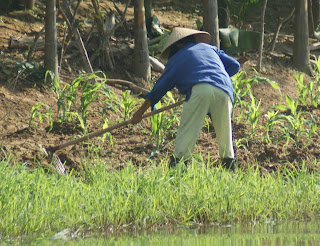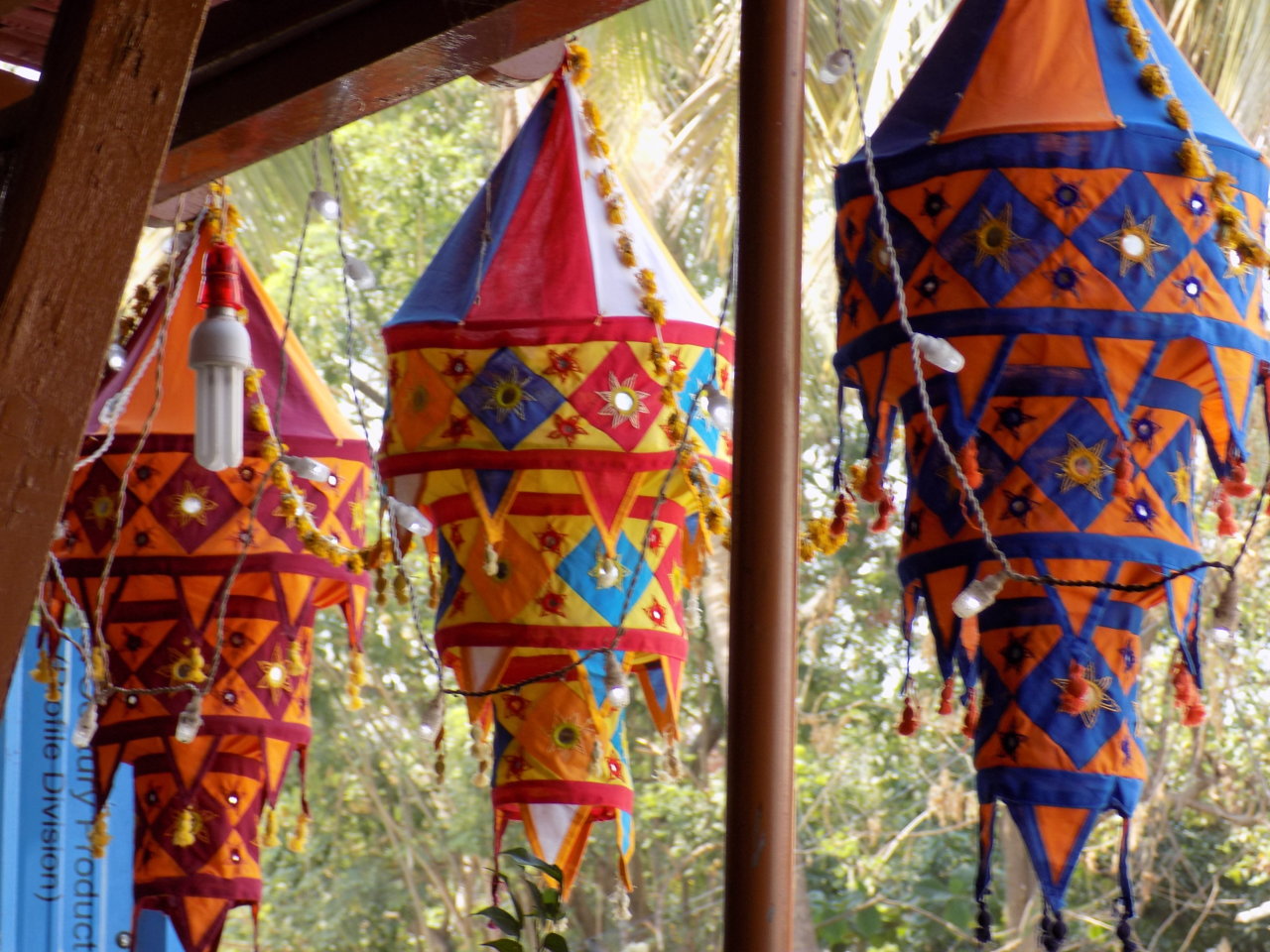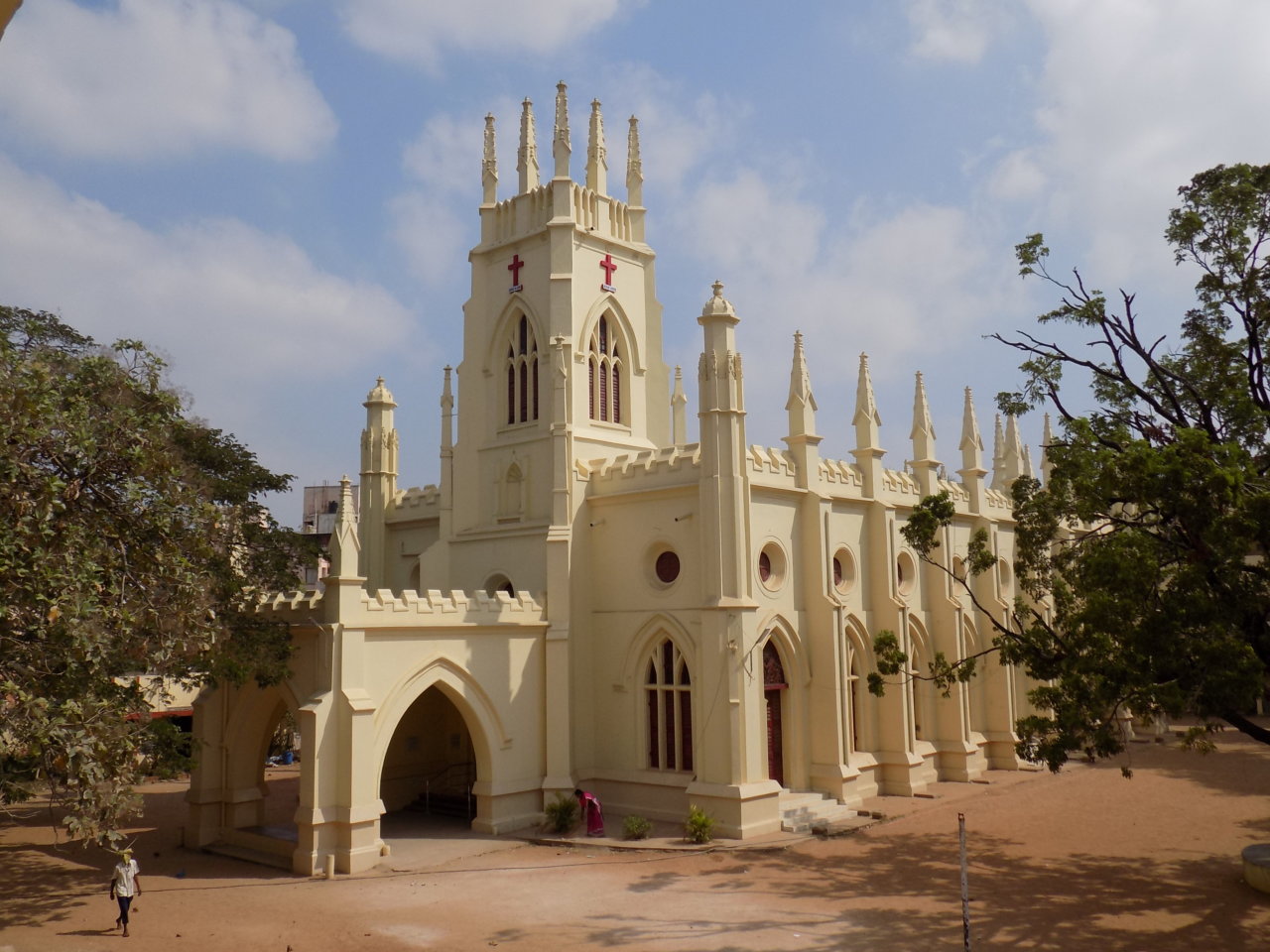
During our stay in Hue, we took a river trip – as most tourists do. The guide books tell you that by doing this, you only get to see the main sights and that you would be better off exploring some of the lesser-known attractions by hiring bicycles or a car and driver. All I can say is that we spent a very pleasant day on the Perfume River in a boat by ourselves. Our guide took us to the furthest point first – Minh Mang’s Mausoleum – in order to avoid the crowds and then we worked our way back, calling at Hon Chen Temple and Thien Mu Pagoda. This worked very well, but, in reality, there were very few crowds to avoid, so I think it would have been just as good if we’d done it the other way!!
As you travel down river, you get to see how the locals live. It’s a mainly rural area around Hue, with the main source of income being farming. We saw how every piece of land is utilised, with vegetables being grown in the rich alluvial soil close to the river bank. It was clearly back-breaking work, using only hand tools in the searing heat. Most of the workers appeared to be women.
 |
| One of the pavilions at Minh Mang’s Mausoleum |
Minh Mang’s Mausoleum, our first stop, was well worth seeing. It was built on a large site with lakes and landscaped gardens and a processional walkway taking you through several similar pavilions and temples until you get to the tomb itself which is only open once a year on Minh Mang’s birthday. We weren’t there on the right day, but I can’t say I’m too sorry about that!
Minh Mang was the second Nguyen emperor. He had a great interest in architecture and oversaw the completion of Hue’s Citadel after the death of the first emperor, Gia Long. He was influenced by Chinese designs when he created his own mausoleum and spent fourteen years choosing a location for it. Once he’d found a site, though, he drafted in 10,000 workers and the whole thing was completed in a little over two years. He is buried there, along with his queen and favourite wife who died when she was only 17. Minh Mang went on to have another 33 wives, over 100 concubines and, it’s reported, 142 children!
 |
| Pilgrims at Hon Chen Temple |
Our next stop was at Hon Chen Temple, the ‘Temple of the Jade Bowl’. It is not a particularly beautiful or memorable building, but the location is stunning – on a rocky promontory from where you can look down at the Perfume River. We arrived at the temple at lunchtime and it was full of local pilgrims sharing a meal. The cooking smells mixed with the pungent burning incense and the thick smoke from a fire made for a brief and not-too-pleasant visit and we were soon back on the boat!
The final stop was at Thien Mu Pagoda, the ‘Pagoda of the Celestial Lady’, a very impressive structure. It was built in 1601, making it the oldest pagoda in Hue. It is probably most renowned as being the home of the Venerable Thich Quang Duc, the monk who famously burned himself to death in 1963 in Saigon in protest at the excesses of President Diem’s regime. The Austin car in which he drove from Thien Mu to Saigon is on display here, along with the iconic photograph that shocked the world.
 |
| Thien Mu Pagoda |
 |
| The beard is made of real human hair! |
 |
| Novice monks doing their washing |
 |
| Fishing |
 |
| Farming on the river bank |
You can see more photos of our Perfume River trip here.











